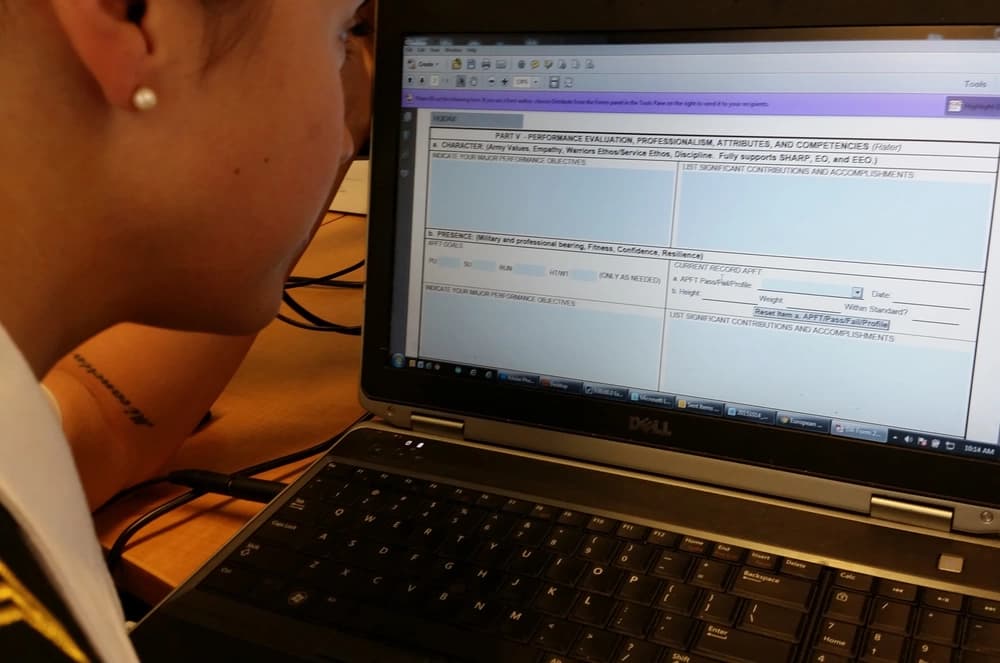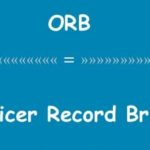Obtaining a Noncommissioned Officer Evaluation Report NCOER Form is a good idea to ensure that you are able to complete the necessary procedures in your military career. It is also important to have a copy of this form for your records. The form is very useful when you submit a report to your supervisor and other personnel.
Whether you are a supervisor or a Soldier, you should understand the Noncommissioned Officer Evaluation Report form. It is one of the most important tools used by the US Army for evaluations.
The NCOER is a form that provides the evaluation of a noncommissioned officer’s overall promotion potential. The report also identifies the appropriate special assignment for the individual. It is important to note that it is a record that covers the entire career of a noncommissioned officer. It also identifies any inequalities in a Soldier’s performance and inequalities between noncommissioned officers.
There are different types of NCOER, including the NCOER for classification, NCOER for rating, and the command sergeant major designation. The Noncommissioned Officer Evaluation Report was developed to help identify the best noncommissioned officers for promotion. It is based on the evaluations of the raters in the organization. This form is part of the Army’s Evaluation Reporting System, which is designed to promote the best Soldiers.
In order to fill out the Noncommissioned Officer Evaluation Report form, you can either print it out or fill it out electronically. You can also use a digital signature viewer, which enables you to select a “Sign” and “Signature Identity”.
The Noncommissioned Officer Evaluation Report system allows the rater to shape the rated performance of a Soldier. The rated NCO’s performance is evaluated by the rater and a senior rater.
What are the different types of Ncoer?
Among the most important tools in the US Army’s evaluation process is the Noncommissioned Office Evaluation Report Form, also referred to as the NCOER. This form is used to evaluate the performance of noncommissioned officers in peacetime and wartime.
In a nutshell, the NCOER is an assessment tool that rates the promotion potential of an NCO. It is designed to provide an organization with a better understanding of their top talent. It can also be used as a classification document. The rating system is composed of three ratings, each one of which includes a rater and a senior rater.
The rater must be a member of the U.S. military or allied forces. The rater must have a minimum period of time in the service and must meet all the criteria set out by the organization.
The senior rater is responsible for overseeing the rated NCO’s performance. He or she will supervise the officer for 90 calendar days. The rater will then forward the evaluation to the rated officer. The rated officer will review the rating and provide his or her opinion.
The NCOER is designed to help the department determine whether an officer should be allowed to continue in service or not. It is also used to identify the appropriate special assignment for an NCO.
The evaluation report is also a task-based document containing steps to follow. These steps should include a consideration of the rated officer’s experience, relative experience of other rated officers, and results that could reasonably be expected given the rater’s time and resources.
Who signs Ncoer?

Among all the evaluation forms in the US Army, the Noncommissioned Officer Evaluation Report (NCOER) is the most important. It is a performance assessment designed to assess the overall promotion potential of noncommissioned officers.
The form is based on evaluations provided by rating officials. The form also helps determine the appropriate special assignment for an NCO.
The form has a couple of different components, including a checklist and a counseling/checklist record. It’s also updated for mandatory counseling sessions.
The evaluation report is also used to qualify an NCO for a special assignment, such as a command sergeant major. The form is a tool that helps the department select the most qualified NCOs to avoid continued service.
The Army has revised the form and is now using DoDID instead of Social Security numbers. This means that you will be able to fill out the form online, and the final product will be polished.
There are a few different types of NCOERs. The “1” rating is the best and represents the most impressive performance. It represents an NCO’s best effort and is the recommended course of action.
The “4” rating indicates an NCO who may need additional training or observation. The “5” rating is an NCO who has demonstrated deficiencies and should be placed on the watch list.
The evaluation report must also be filed in the permanent section of the performance section of the OMPF. The form is not meant to be a career-defining document.
How do I access my Ncoer?
DA Form 2166-9 is a revised version of the NCOER. This new report includes an incorporated rater profile and will provide more information than the previous form.
The new form also incorporates a rating scheme that will be useful for raters. The rater’s performance is assessed, and the rating chain can be a helpful tool for evaluating an NCO’s promotion potential. The best part is that the new NCOER will be available as a free download.
DA Form 2166-8-1 is a checklist record. It provides the most important information about a noncommissioned officer’s performance. This form is a good example of a web-based Evaluation Entry System, which will be ready for a major rollout on December 10.
The DA Form 2166-8-1 is one of many you’ll want to use. You can also fill out the form using PDFfiller, which allows you to customize the forms to your liking. You’ll also have the ability to create a polished, final product.
The DA Form 2166-8-1 contains a few other useful data points, including a counseling/checklist record. It also includes the Army’s new noncommissioned officer evaluation report, which will be useful for assessing the NCO’s promotion potential. The new form will be useful in qualitative management and in identifying special assignments that could lead to retention in rank.
The DA Form 2166-9 series will be an enhancement and will be available for a free download. It’s also a good idea to ensure that rating officials use the latest evaluation report forms.
Can I write my own Ncoer?

DA Form 2166-8, also known as an NCOER, is a form used by noncommissioned officers to assess their performance. It is part of the Army’s evaluation reporting system.
The main purpose of this form is to describe a Soldier’s performance during a particular period of time. It should include bullet statements for all categories.
There are several types of NCOERs. Some are qualitative management reports. Others are based on a numerical rating. They also have different types of responsibilities.
An NCOER must be written before the end of the rating period. Normally, it is for a year. Some NCOs may use it for classification. It also helps to assess the promotion potential of a noncommissioned officer.
One of the most important duties of a leader is mission accomplishment. The NCOER has a section to list accomplishments during the reporting period. This is an official record of a Soldier’s performance. It allows for comparison with other peers in the same MOS.
However, this is not the most important part of an NCOER. A supervisor is responsible for writing an NCOER for a subordinate. They are more concerned with getting good material for the report than they are with employee input.
The NCOER should also contain a list of achievements during the reporting period. This is an effective measure of performance. The list should include awards, volunteer work, and extra duties.
How often does an NCO get an Ncoer?
Generally, a noncommissioned officer gets an NCOER once every year. However, a rater may only give an NCOER if he feels the Soldier’s performance has been satisfactory.
A Soldier can appeal his or her rating through the Commander’s Inquiry or the Commandant’s Inquiry. These inquiries must be requested in specific situations. The resulting results will be forwarded to HQDA within 120 days.
The rating process involves a variety of people. The first-line supervisor, known as a rater, is responsible for writing NCOERs for subordinates. He or she will also review the NCO’s duty description to ensure the Soldier’s performance meets Army standards.
In addition, the rater will discuss any areas that need improvement. Counseling is also a key part of the rating process. It provides the Soldier with an opportunity to highlight his or her achievements and to learn more about the expectations of the position. The rater will also explain the standards for success and good behavior.
In the end, an NCO’s rating is based on his or her performance during the past year. In order to have a positive rating, the Soldier needs to provide accurate and thorough information. The rater will review the Soldier’s performance with an eye to highlighting the areas that need improvement.
The rater will use a DA Form 2166-8 to evaluate a Soldier’s overall performance. The form rates a Soldier’s performance in five categories.

